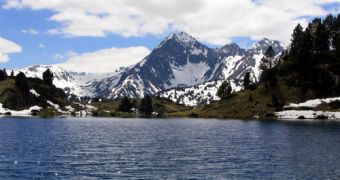The Spanish Environment Ministry has announced only recently that the Pyrenee mountains, which are located at the border between France and Spain, have lost more than 90 percent of their ice during the 20th century, and that, if the current global warming trend continues, the remaining 10 percent of ice could disappear within a couple of decades. And the bad news is that the speed at which the glaciers melt is slowly accelerating, prompting even more concerns about irrigation and drinking water, as well as about the security of the country's food supplies.
Throughout the world, the main water source of billions of people is that coming from rivers, which, in turn, draw their water from mountaintop glaciers. Over the past century, intensely-polluting activities have prompted a sharp decline in the amounts of ice that could be found both at the poles and on top of the mountains.
To gain a perspective on how things currently degenerate, the world's ice has seen a decrease of well over 2 trillion tons from 2007 to 2008, the largest such recorded loss in history. And the trend continues.
In the Pyrenees, the Spanish ministry announced that of the 8,150 acres of ice that covered the mountain range in 1900, the vast majority, namely several thousand acres, had been lost. At this point, the once-white peaks of these mountains now only house 960 acres of ice altogether, spread on both their French and Spanish sides. While warming accelerated throughout the last 100 years, and glaciers started melting faster, it's between 2002 and 2008 that the largest fluctuations were recorded.
In just 6 years, the Pyrenees lost about 25 percent of their ice mass. This period of time, though it may seem extensive, is less than nothing in the grand scheme of things. For example, the newly-discovered Alp-like mountain range that lies beneath the Antarctic ice is 500 million years old, dating back to a time when not even dinosaurs were roaming the Earth.
“Last year there was a lot of snow. This stabilized the glaciers but they did not grow,” Miguel Frances, the coordinator of the new study, said as quoted by El Pais newspaper. “We need 20 winters like this one, which is a one-off. Otherwise, in 25 or 30 years' time, the majority of glaciers will have disappeared and by the middle of the century they'll all be gone,” Pyrenees Glacier Monument Heritage presidents Fernando Lampre added for the same newspaper.
Again, this rapid melting has been directly linked to global warming and climate change. These global phenomena cause massive changes in the ways temperatures are distributed around the world, and also destroy established rainfall patterns, which can be very dangerous if countries want to protect their food supplies and their fresh water reserves.

 14 DAY TRIAL //
14 DAY TRIAL //